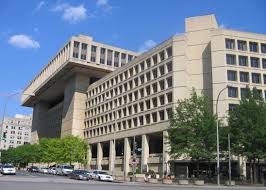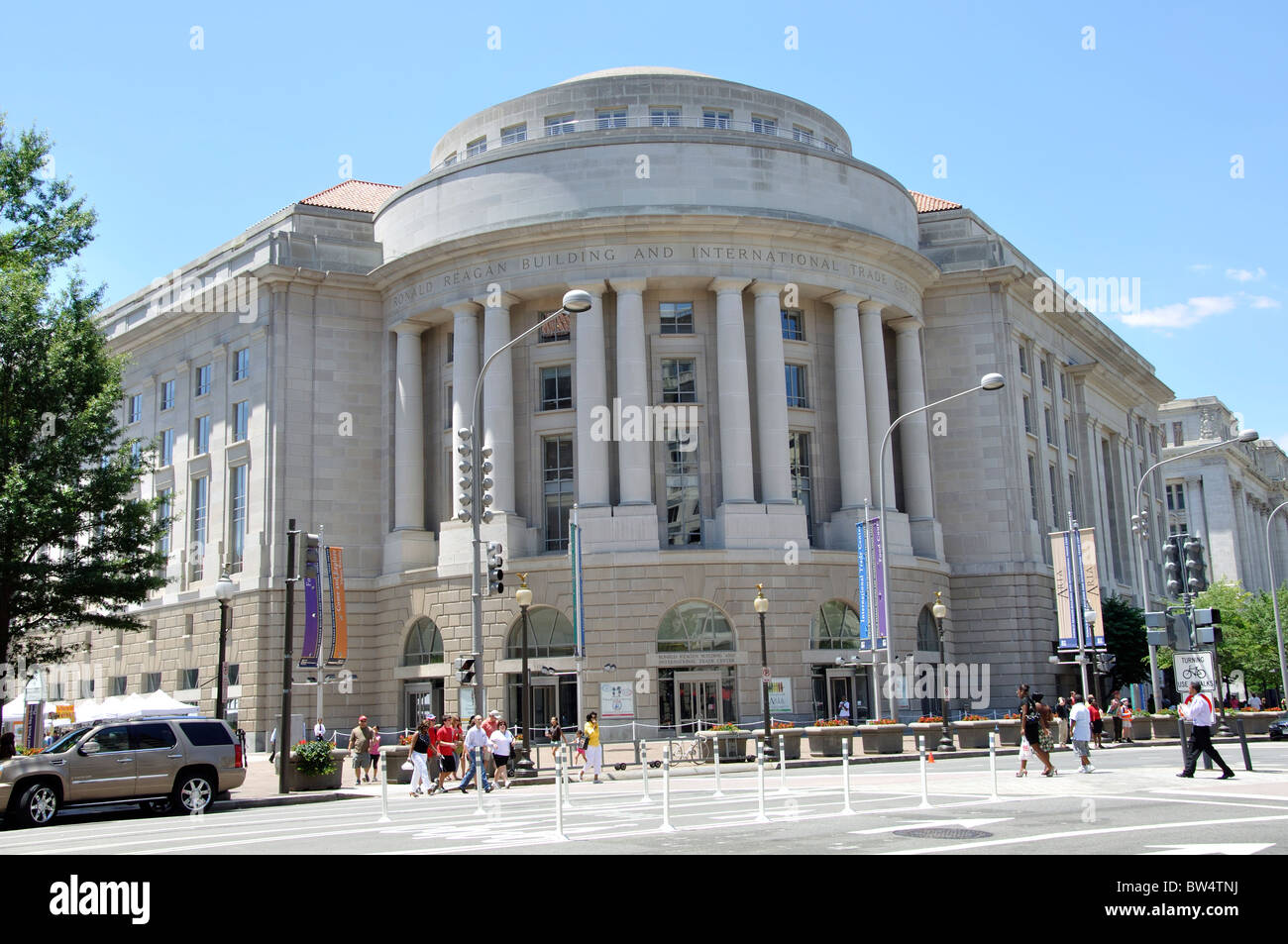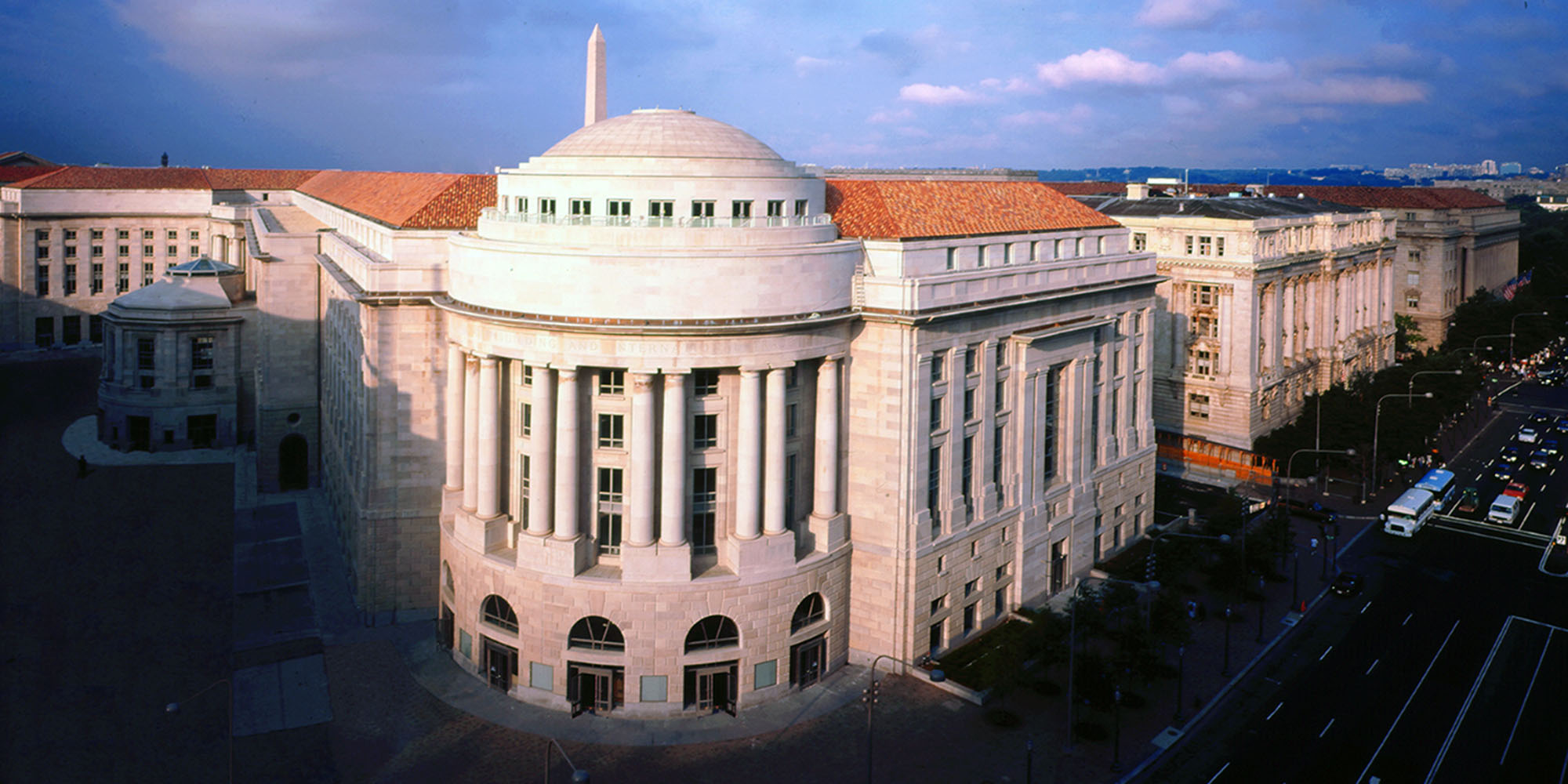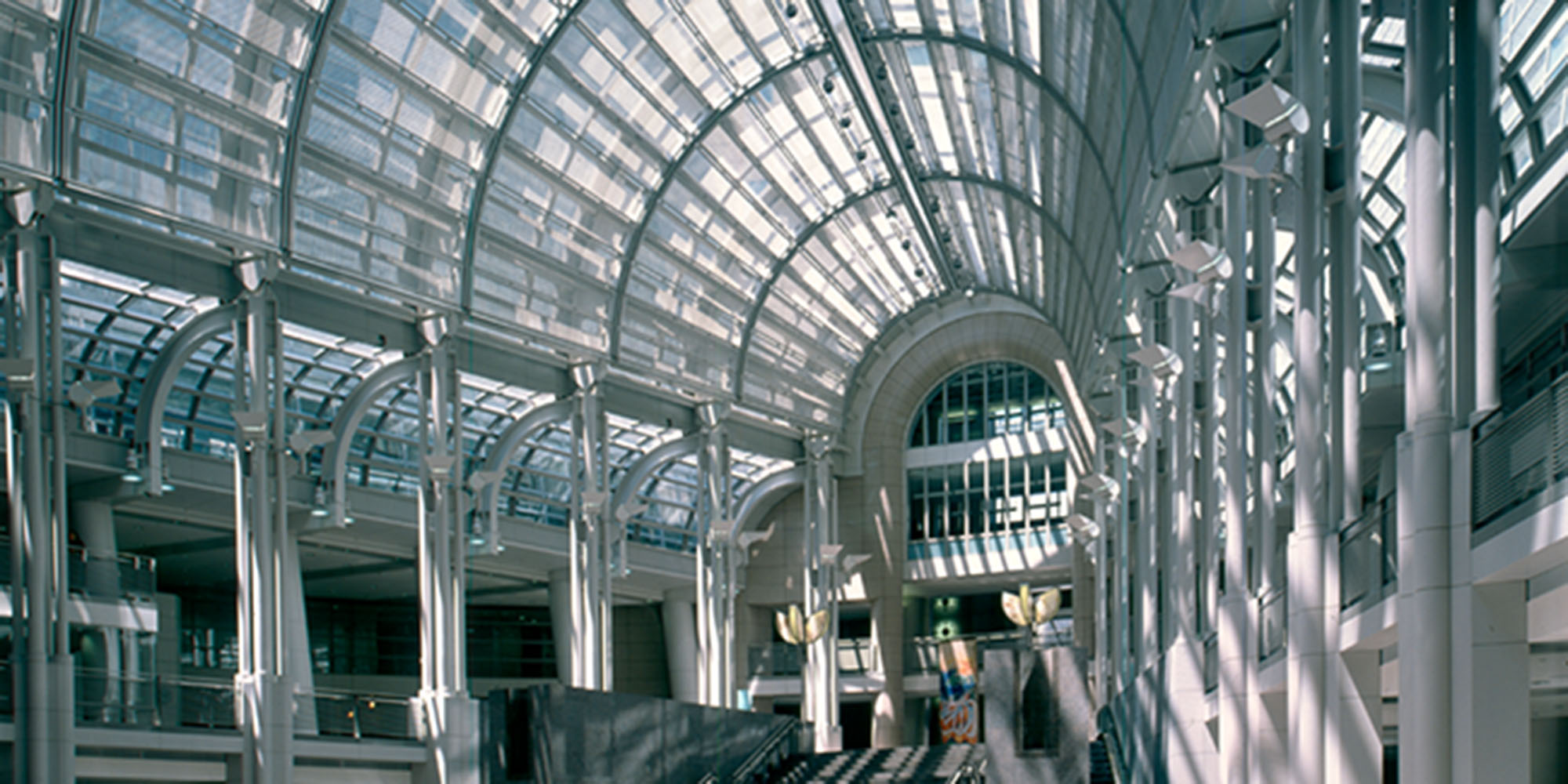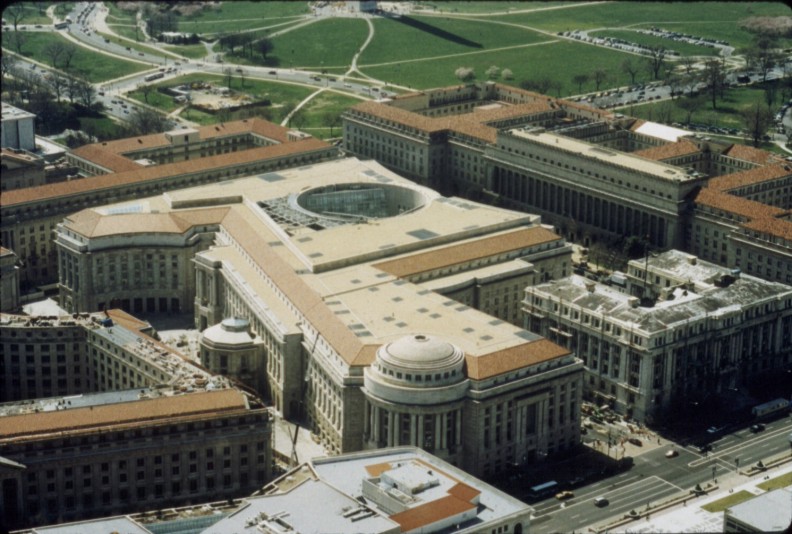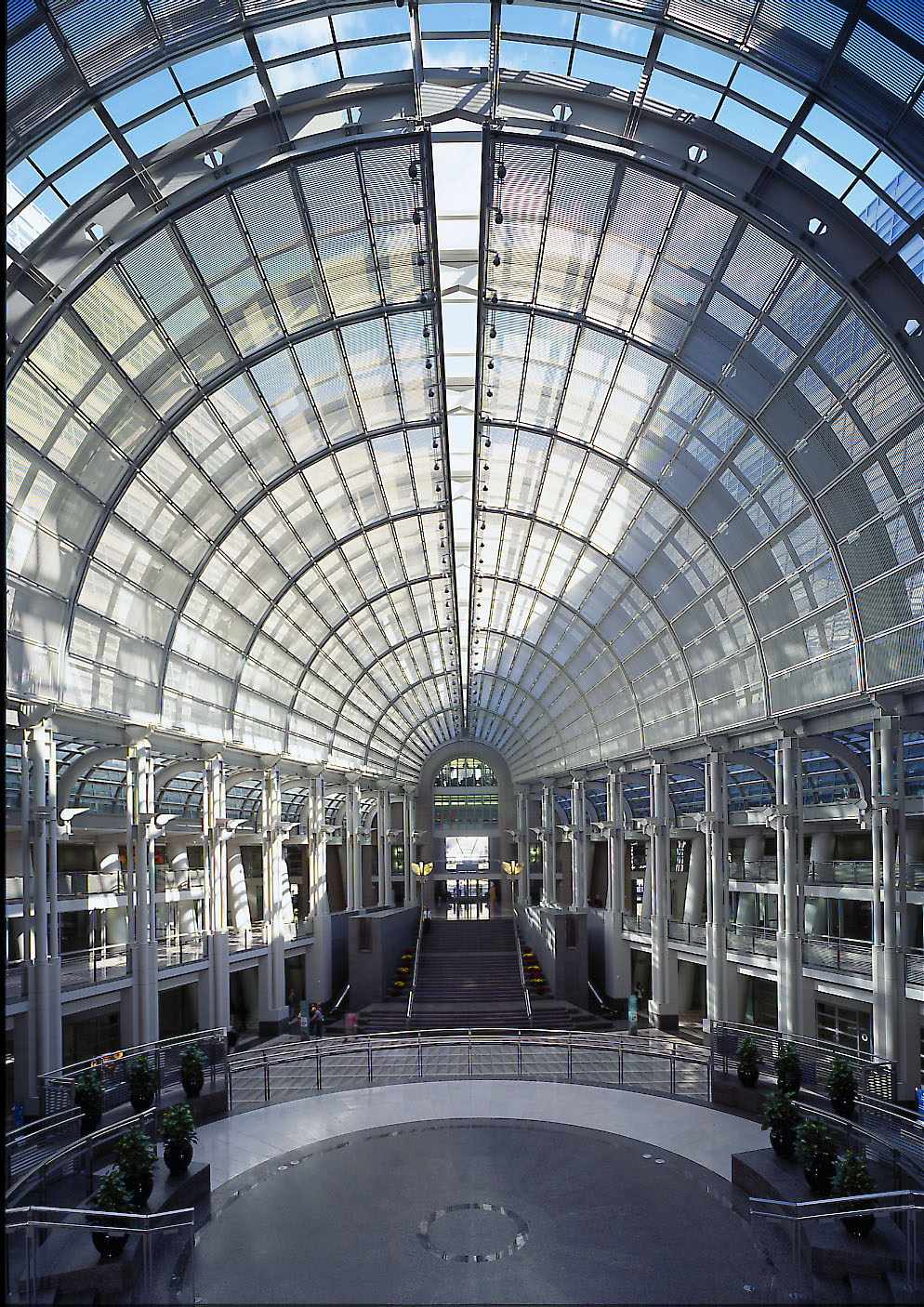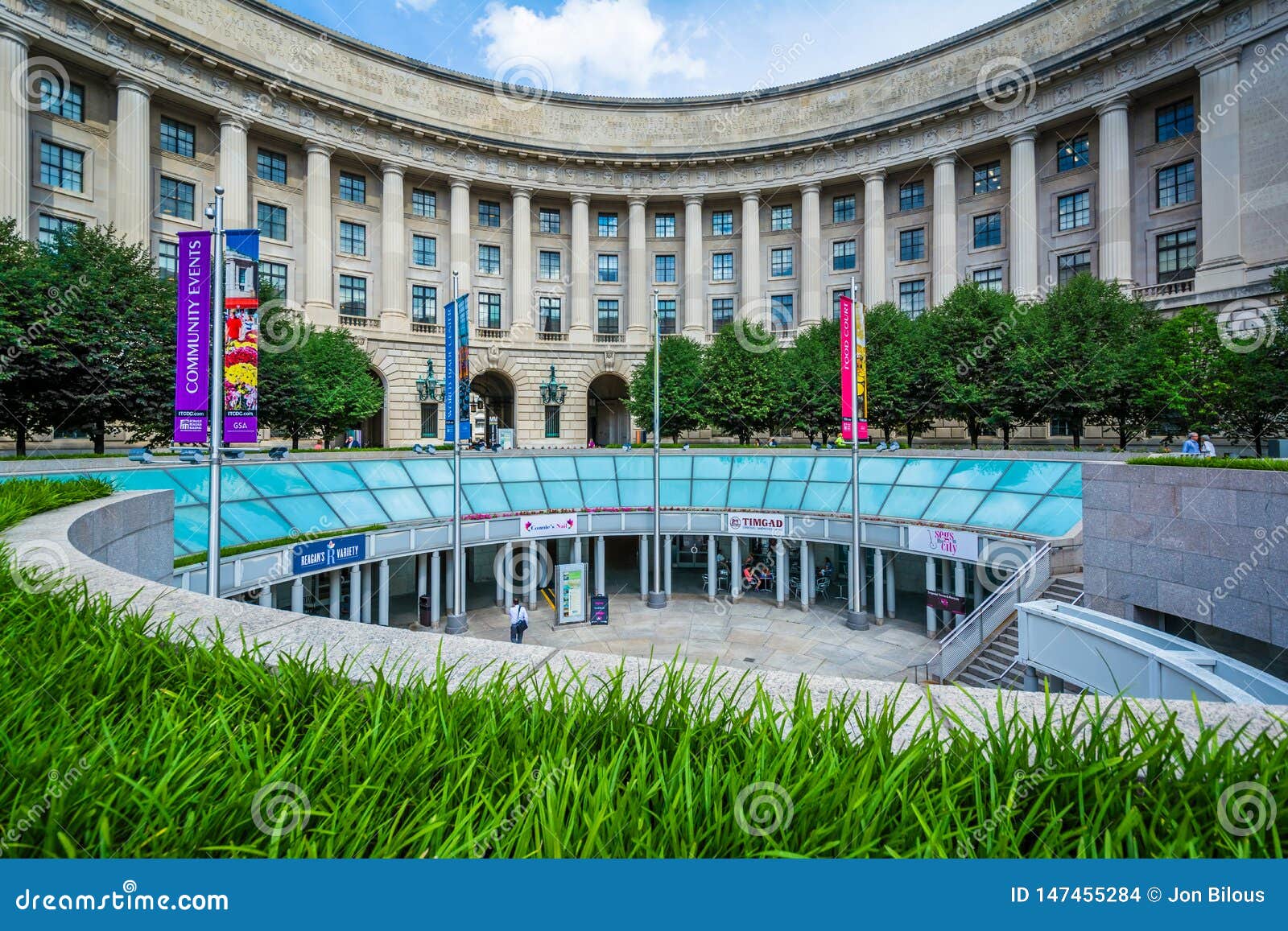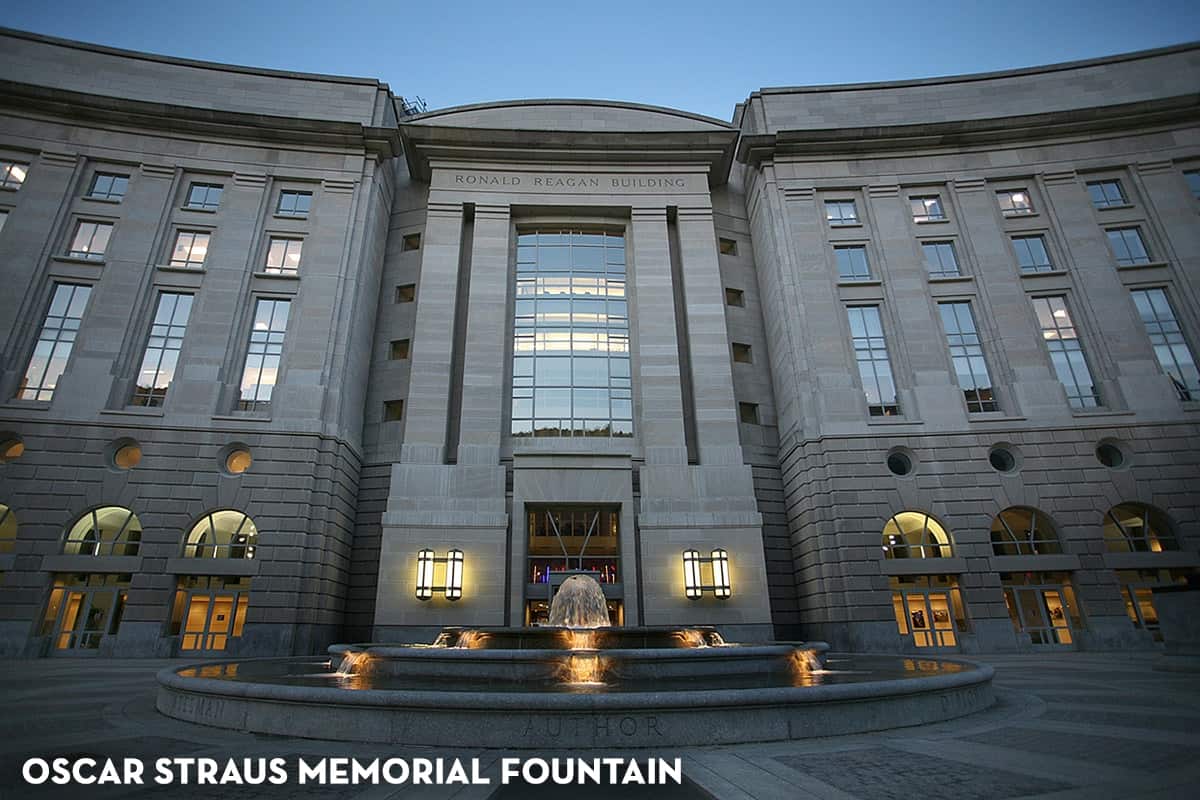Ronald Reagan Building And International Trade Center

Washington D.C.'s Ronald Reagan Building and International Trade Center (RRBITC), a massive structure occupying a full city block, continues to serve as a significant hub for both governmental functions and international commerce. The building, named after the 40th President of the United States, has evolved into a multi-faceted entity hosting everything from federal agencies to public events.
The RRBITC stands as a testament to ambitious urban planning and the complexities of integrating governmental and commercial activities. It is essential to understand the building’s purpose, its multifaceted nature, and its ongoing impact on the city and the global trade landscape. It serves as a crucial point of interaction between government, business, and the public.
A Colossus of Concrete and Commerce
Located at 1300 Pennsylvania Avenue NW, the RRBITC is the second-largest federal building in the United States after the Pentagon. Completed in 1998, the building’s construction was a significant undertaking, costing approximately $818 million.
The RRBITC houses several government agencies, including U.S. Customs and Border Protection, the Agency for International Development (USAID), and the Woodrow Wilson International Center for Scholars. These agencies utilize the building's extensive office space to carry out their respective missions.
In addition to government offices, the building functions as an International Trade Center (ITC), aiming to facilitate global commerce. This aspect of the building is managed by a private entity, Drew Company, under a long-term lease with the General Services Administration (GSA).
Dual Functionality: Government and Trade
The building's design reflects its dual purpose. The government component provides secure office spaces for federal employees. The ITC component offers exhibition and conference facilities, aiming to attract international businesses and organizations.
The ITC hosts a variety of trade-related events, including conferences, exhibitions, and meetings. These events aim to promote international business and foster collaboration among different countries and industries.
The RRBITC's location on Pennsylvania Avenue places it in close proximity to other significant landmarks, including the White House and the U.S. Capitol Building. This central location enhances its visibility and accessibility for both government officials and international visitors.
A Hub for Events and Public Access
Beyond its primary functions, the RRBITC also serves as a venue for public events and cultural activities. The building's spacious atrium and outdoor plaza host concerts, festivals, and other gatherings.
The building also features a food court and retail spaces, catering to the needs of both employees and visitors. These amenities contribute to the RRBITC's role as a vibrant and accessible public space.
The Ronald Reagan Building and International Trade Center aims to be more than just an office building. It aims to be a destination for both work and leisure.
Challenges and Opportunities
Managing a building with such diverse functions presents certain challenges. Balancing the security needs of government agencies with the accessibility requirements of a public space requires careful planning and coordination.
Attracting and maintaining a consistent flow of international trade events is also an ongoing challenge. The ITC must compete with other venues around the world to secure lucrative contracts and partnerships.
However, the RRBITC also presents significant opportunities for economic development and international collaboration. By fostering trade and hosting important events, the building can contribute to the growth of the local economy and the strengthening of global relationships.
The Legacy of Ronald Reagan
Naming the building after President Ronald Reagan was a deliberate choice. It aimed to commemorate his commitment to free trade and international cooperation.
Reagan's policies emphasized deregulation, tax cuts, and a strong national defense. He also championed free trade agreements and sought to expand economic opportunities for American businesses.
The Ronald Reagan Building and International Trade Center can therefore be seen as a physical manifestation of his vision for a more interconnected and prosperous world.
An Evolving Landmark
The Ronald Reagan Building and International Trade Center is not a static entity. It continues to evolve and adapt to the changing needs of both the government and the international business community.
Ongoing efforts are underway to modernize the building's infrastructure and enhance its sustainability. These initiatives aim to ensure that the RRBITC remains a valuable asset for years to come.
Its success will depend on its ability to adapt to the evolving needs of the 21st century. It must also continue to balance its dual roles as a government facility and an international trade center.
Looking ahead, the Ronald Reagan Building and International Trade Center will likely remain a prominent landmark in Washington, D.C. It stands as a symbol of the intersection between government, commerce, and the global community.
